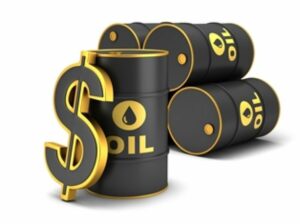Americans are buying more gasoline as people respond to low prices by driving more miles in bigger cars. Crude inventories there have fallen for the third week running (albeit from extraordinarily high levels). American oil output is down slightly too. But this price rally is unlikely to be sustained.
Why?
Oversupply. Pumping by OPEC, the Organization of the Petroleum-Exporting Countries, has failed to derail the boom in American shale oil. Saudi oil production rose to a record 10.3m barrels per day (b/d) in April.
The end of OPEC curbs on production sent prices tumbling in November. But productivity gains and cost-cutting in fracking and horizontal drilling have more than compensated for the price fall.
Output in North Dakota, one of America’s main oil-producing regions, actually rose in March. Production there will probably reach 2m barrels a day (b/d) by mid-year.
American shale firms are now the oil market’s swing producers
How long will this last?
The biggest long-term factor in the oil price is the cost of replacing oil wells as they run out (“deplete” in industry parlance). The international oil companies have slashed their long-term capital expenditure.
Projects in Canada’s oil sands, in deep-water and Arctic oil fields, look worryingly costly. But the finding and developing (F&D) cost of new reserves is falling, not rising, thanks to America’s frackers.
The median F&D cost per barrel of their “light tight” oil is just $24, reckons Macquarie, a bank. The worldwide average in recent years was over $30. Moreover Saudi Arabia, Iraq and Libya have plenty of low-cost oil left to pump.
For now those countries are chasing market share, rather than trying to raise prices by curtailing output. The other relevant factor is demand. The use of fossil fuels in the rich world is mostly stagnant or falling. Emerging economies are not currently taking up the slack.
What will the price be next year?
Anyone who really knew that would have better things to do than write articles about the oil price. Goldman Sachs thinks it will fall to $45 by October.
That assumes no geopolitical disruptions or natural disasters—the most probable culprits behind any new price spike. But so far technology and finance are proving more than a match for geology. And high oil stocks will cushion markets against moderate disruptions.




